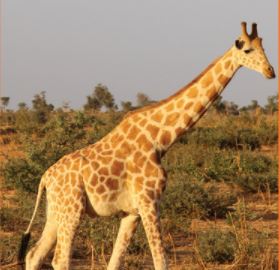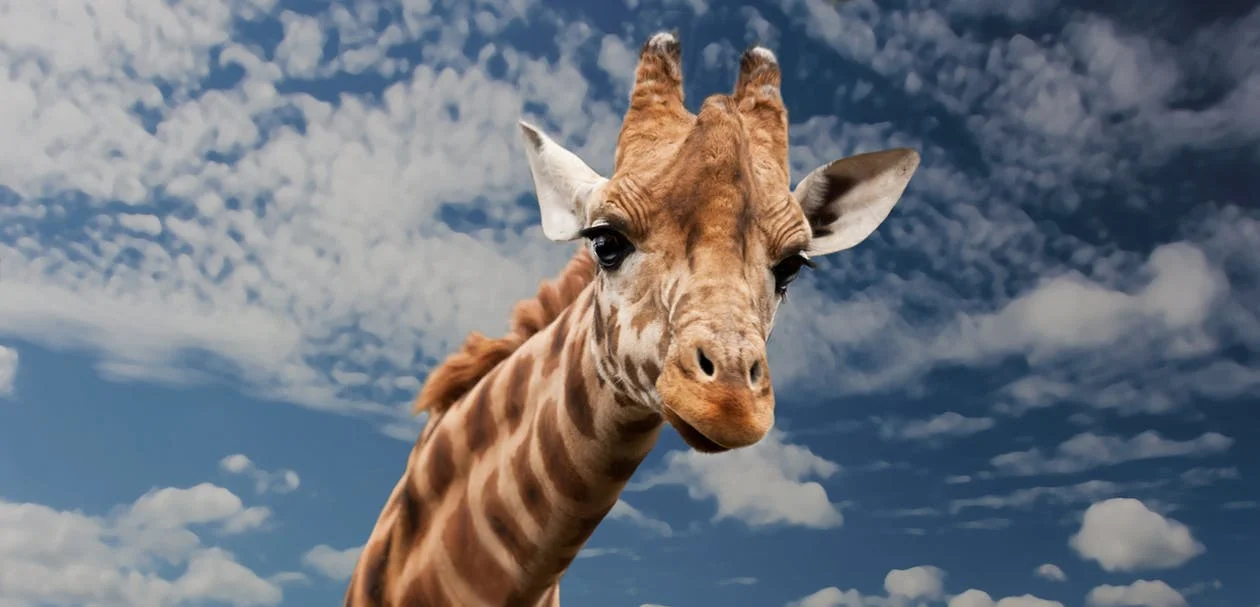
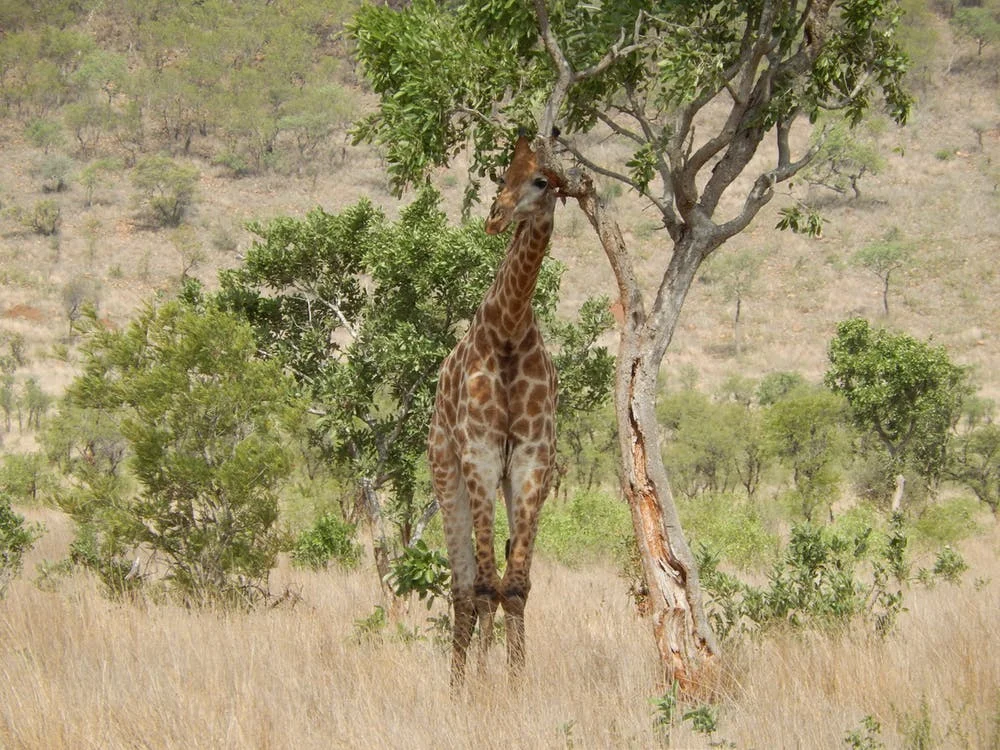
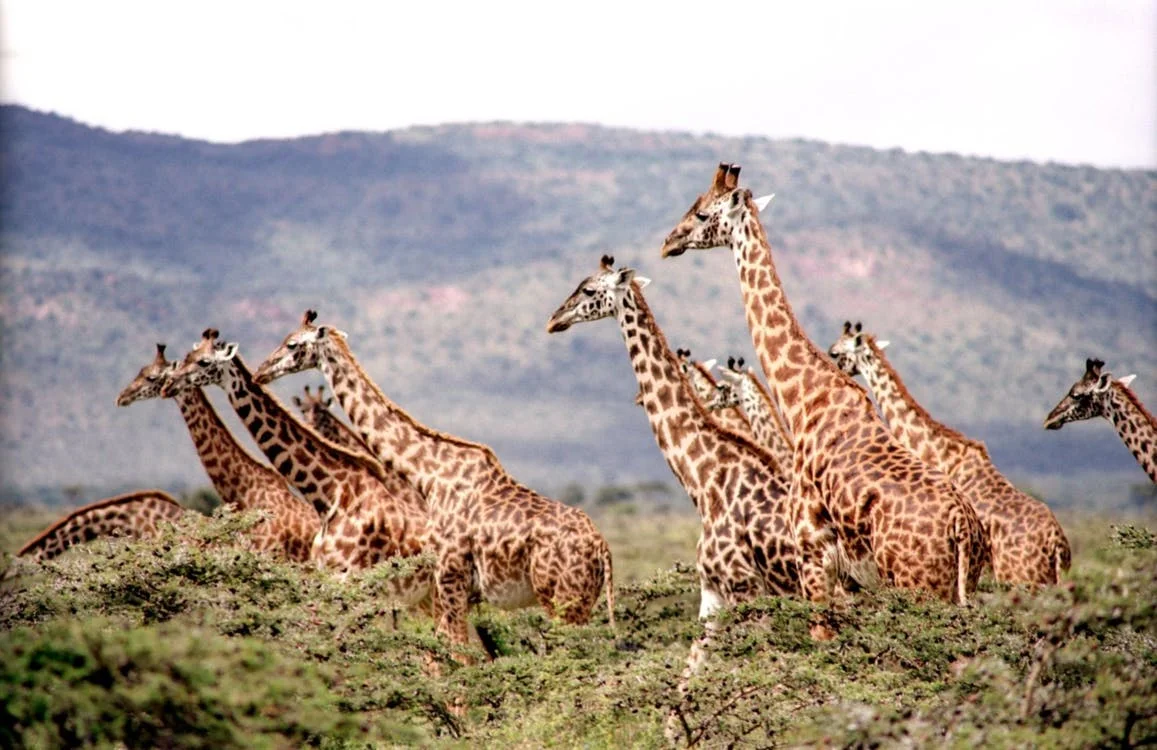
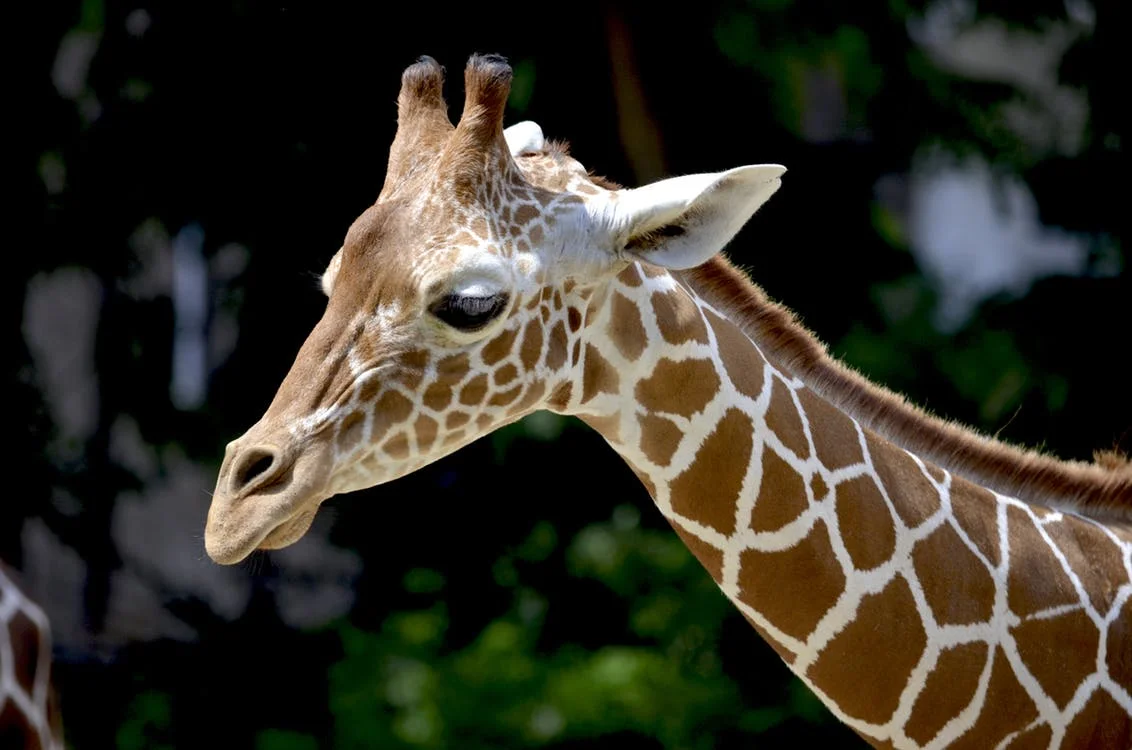
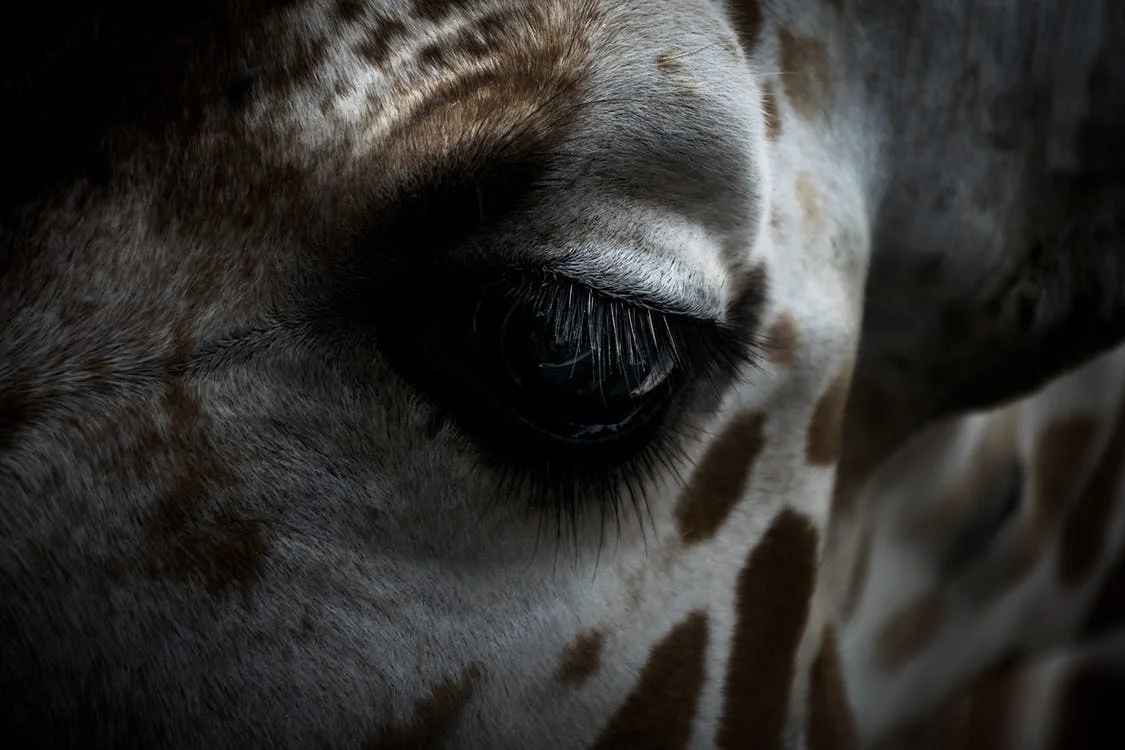

Giraffe Facts
Giraffe Facts

Fast Facts
Fast Facts
Males
Male giraffes can grow to be 18 feet tall (that's more than 3 times the height of the average man), and weigh in at 2500 lbs. A male giraffe is called a bull and will live about 14 years.
Females
Female giraffes can reach 14-15 feet tall and weigh 1600 lbs. A female giraffe is called a cow. Females live about 20 years.
Babies
A baby giraffe is called a calf. A newborn calf is about 6 feet tall and weighs 125-150 lbs.
Gestation & Birth
A mother giraffe has an average gestation of 14.5 months. When the calf is born it will stand and nurse within the first hour of its life. Within 10 hours a newborn giraffe is able to run fast enough to keep up with the herd.
Photo: Ralph Daily, Creative Commons
Tongue
Giraffes have a highly flexible prehensile tongue that they use to strip leaves from vegetation. The dark color of their tongue protects it from the African sun.
Photo: Bilby, Creative Commons
Ossicones
Giraffe "horns" are special structures called ossicones. They are formed from ossified cartilage covered in skin and fur. Ossicones are flat when a giraffe is born. Within a few days of birth they will stand upright and become rigid.
Photo: Bjorn Christian Torrissen, Creative Commons
Diet
Acacia leaves and shoots make up the greater part of a giraffe's diet. They use their long tongues to wrap branches and slide the leaves off the tree. Giraffes get much of the water they need from browsing and can tolerate long stretches without drinking liquid water if fresh browse is available.
Photo: Roland H., Creative Commons

Population
Population
Less than 80,000
In 1998 the total population of giraffes in the wild was estimated at 140,000 (East, 1999). Recent population estimates show that giraffes have faced a steep decline, with fewer than 80,000 individuals remaining (Fennessy, 2013).
On April 19, 2017 an Endangered Species Act petition was submitted to the US Fish and Wildlife Service. Protection under the Endangered Species Act could prevent giraffe pelts and parts being imported as hunting trophies, and slow the trade of giraffe bone and hair used in jewelry, ceremonial items, and eastern medicines.

Subspecies
Subspecies
Giraffa camelopardalis
Currently, there is one species and nine subspecies of giraffes recognized by the scientific community. Recent genetic discoveries may lead to future reclassification of giraffes into multiple species, raising important questions about conservation and protection of the most imperiled species of the giraffa genus.
Nubian Giraffe | G. c. camelopardalis
<650 | Critically Endangered
There are fewer than 200 Nubian Giraffe in western Ethiopia and less than 450 in eastern South Sudan. These populations are particularly vulnerable to poaching and exact estimates are not known.
Rothschild's Giraffe | G. c. rothschildi
<1,500 | Endangered
Fewer than 1,300 remain in northern Uganda, and approximately 450 individuals range through west-central Kenya. Also called the Ugandan or Baringo giraffe.
Reticulated Giraffe | G. c. reticulata
<8,700 | Endangered
Also called the Somali giraffe, this subspecies numbered more than 37,000 only three decades ago. Small numbers remain in Somalia and Ethiopia, with larger groups in Kenya. This subspecies is commonly found in zoos.
Kordofan Giraffe | G. c. antiquorum
<2,000 | Critically Endangered
Native to some of the most conflict-ridden regions in Africa, this subspecies can be found in southern Chad, Central African Republic, northern Cameroon, northern Democratic Republic of Congo, and western South Sudan.
West African Giraffe | G. c. peralta
<450 | Endangered
Despite its endangered status, the West African Giraffe has seen improvement over the last 20 years. Strict protections by the Niger government has helped the population increase from just 49 individuals to approximately 450.
Masai Giraffe | G. c. tippelskirchi
<32,500 | Endangered
Also called the Kilimanjaro giraffe, this subspecies is found throughout Kenya and Tanzania with a small translocated population in Rwanda. The population has declined by more than half in the past 30 years.
Thornicroft's Giraffe | G. c. thornicrofti
<600 | Vulnerable
Although a small population, Thornicroft's Giraffe (also historically called Rhodesian giraffe) survive in a remote region of north-eastern Zambia. Their nearest giraffe neighbors are more than 400 km away.
South African Giraffe | G. c. giraffa
<35,000 | Vulnerable
Also called the Cape Giraffe, this subspecies can be found in Angola, Botswana, Mozambique, South Africa, Zambia and Zimbabwe. Their range overlaps with Angolan giraffe and some scientists believe there are hybrid populations of these subspecies.
Angolan Giraffe | G. c. angolensis
<13,050 | Vulnerable
Angolan giraffe are a conservation success story. In three decades the population has nearly tripled thanks to coordinated conservation efforts. This subspecies is found in Botswana and Namibia, with populations reintroduced to Angola, and private herd in South Africa and Zimbabwe.

Threats
Threats
A Perilous Future
Dramatic declines in wild giraffe populations is a very real threat to this iconic species. With populations already diminished, giraffes lack resilience to the complex web of natural and anthropogenic threats they face.










